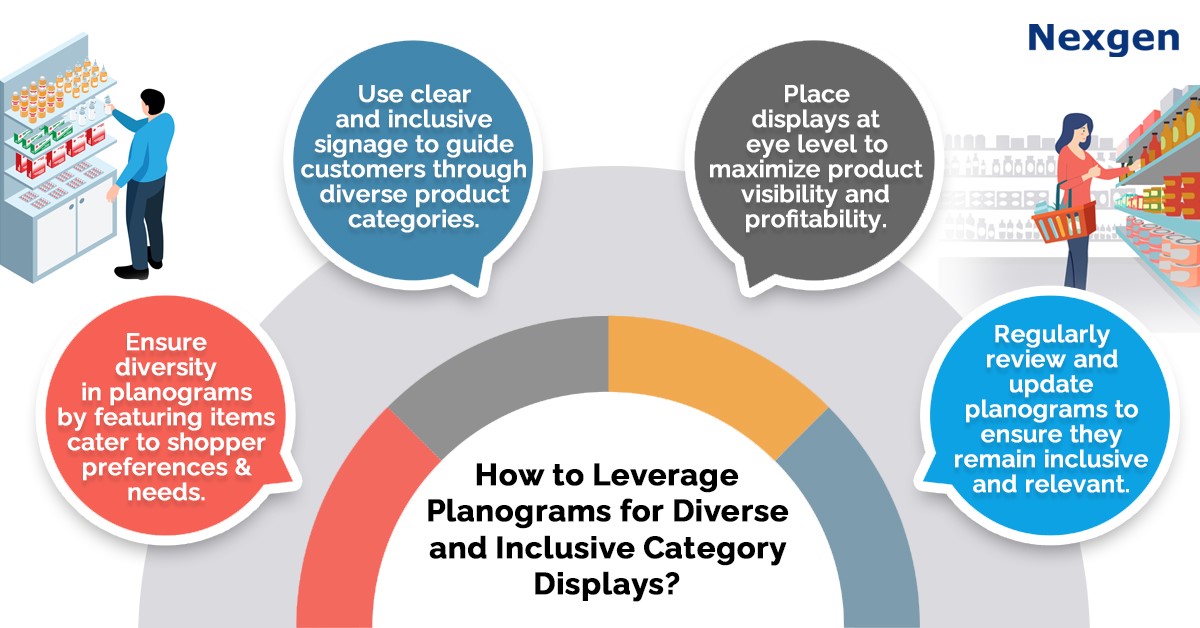Where consumer expectations are as diverse as the shoppers themselves, businesses are embracing the role of inclusivity. Creating an environment that resonates with a broad and varied audience is no longer a mere trend but a strategic necessity. In this pursuit, shelf planning software, such as planograms have emerged as an important tool for fostering diversity and inclusivity within category displays.
As the retail landscape undergoes a transformation, customers increasingly seek more than just products—they seek experiences that reflect their identities, values, and aspirations. This shift necessitates a reimagining of how shoppers approach merchandising in retail stores. Planograms, with their visual representation of retail spaces, offer a unique opportunity to infuse inclusivity into the shopping experience. In this blog post, we will explore practical strategies on how businesses can leverage planograms to create welcoming and inclusive retail environments.

- Know your target customer: Before embarking on the journey to inclusivity, it is crucial to understand your customer base. Conduct thorough market research or analyze past sales data to identify the demographics, cultural preferences, and unique needs of your audience. This insight will guide your planogram strategy and help in creating displays that resonate with a diverse range of shoppers. Let us consider an example of an apparel store aiming to enhance its inclusivity by understanding its target customer base. By using past sales data or conducting marketing research it is possible to identify preferences of different age groups, with a significant portion of young adults seeking trendsetting styles, as well as middle-aged customers looking for both timeless classics and modern trends.
- Representation matters: Visual representation is key to inclusivity. When creating planograms, aim for diversity in imagery. Include a variety of models representing different ethnicities, genders, age groups, and abilities. This approach not only makes your displays more inclusive but also sends a positive message about your commitment to diversity.
- Tailor sections for diversity: Utilize visual merchandising planograms to create dedicated sections that cater to different cultural celebrations, events, or specific customer preferences. This can involve featuring products relevant to various cultural or lifestyle categories, ensuring that your retail space reflects the diverse interests of your customers. For instance, most grocery stores use planograms to create sections that cater to specific dietary preferences, such as gluten-free, vegan, or organic options. This ensures that every customer can easily find products that align with their lifestyle choices.
- Accessibility is key: Inclusivity extends beyond representation to accessibility. Evaluate the accessibility of your displays to ensure they can be navigated easily by all customers, including those with mobility challenges or sensory impairments. Consider factors such as shelf height, aisle width, and clear signage for an inclusive shopping experience. Planograms are implemented to ensure products are displayed at varying heights, making them easily reachable for customers who may use mobility aids or have different height requirements.
- Collaborate with diverse suppliers: Strengthen your commitment to inclusivity by collaborating with a diverse range of suppliers. This not only brings unique products to your shelves but also supports businesses from various backgrounds, contributing to a more inclusive representation of brands in your retail space.
Overview of Nexgen POG
Nexgen POG is a robust and user-friendly cloud-based visual merchandising tool. It is designed for quick and efficient planogramming with minimal effort. Planogram in retail can be designed by easily dragging and dropping the products. The multi-device compatibility feature of POG allows you to obtain, share and edit planogram on any device, including your phone. It helps in designing store-specific planograms for increased product visibility and sales.
Get Your Free Trial Now!